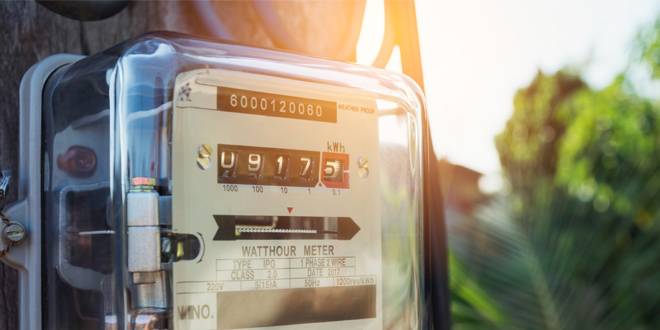
The battle for summer comfort heats up! Choosing between a ductless mini-split system and central air conditioning can feel like a financial labyrinth. Will a mini-split’s targeted cooling keep your wallet frosty, or will central air conditioning offer a more cost-effective blast of cool air for your entire home? This post throws down the gauntlet, comparing the electricity costs of each system and helping you determine the champion for your budget and comfort needs. Let’s crunch the numbers and find your cool cash champion!
Understanding Mini-Split and Central Air Conditioning Systems
Choosing the right air conditioning system for your home involves understanding the differences and benefits of mini-split and central air conditioning systems. Each option impacts comfort, energy efficiency, and electricity costs differently. Here, we break down the essentials to help you make an informed decision.
Ductless Mini-Split Systems: Flexibility and Efficiency
What Are Mini-Split Systems?
Mini-split systems are ductless air conditioning solutions that consist of an outdoor compressor/condenser unit and one or more indoor air handling units. These components are connected by small refrigerant lines, allowing for a less invasive installation process. Mini-splits offer the flexibility of cooling individual rooms or zones, which can lead to significant energy savings.
Advantages of Mini-Split Systems
- Zoned Cooling: Control the temperature in different rooms or areas independently.
- Installation: Generally easier and less invasive, especially in homes without existing ductwork.
- Energy Efficiency: Often have high SEER ratings, leading to lower operational costs.

Central Air Conditioning Systems: Whole-Home Comfort
What Are Central Air Conditioning Systems?
Central air conditioning systems use a single outdoor unit connected to an indoor air handler, distributing cooled air through a network of ducts throughout your home. This type of cooling system is ideal for efficiently cooling multiple rooms or an entire house, especially if ductwork is already in place.
Advantages of Central Air Systems
- Uniform Cooling: Provides a consistent cooling experience across your entire home.
- Capacity: Suitable for larger homes or spaces that require uniform temperature control.
- Integration: Easily integrates with existing HVAC systems and ductwork.
Energy Efficiency and SEER Ratings
Both mini-split and central air systems can be highly energy efficient, as indicated by their SEER (Seasonal Energy Efficiency Ratio) ratings. A higher SEER rating denotes greater efficiency and lower electricity consumption, which is crucial for reducing electricity bills. However, the actual efficiency depends on factors like installation quality, home insulation, and maintenance.
Initial Installation Costs and Considerations
When planning for a new air conditioning system, understanding the initial installation costs and considerations is crucial. Both mini-split and central air systems come with their own set of expenses and factors that can influence the overall cost. Here, we’ll delve into what you need to know about the initial investment for each system.

Mini-Split Systems: Cost-Efficiency for Selected Spaces
Installation Costs:
Mini-split systems often have a lower initial installation cost compared to central air systems, primarily due to the absence of ductwork. However, the total cost can vary significantly based on the number of indoor units required and the complexity of the installation.
Considerations:
- Number of Zones: Each additional indoor unit increases the overall cost.
- Installation Complexity: Costs can vary based on the difficulty of installing the outdoor unit and running refrigerant lines to each indoor unit.
- Home Layout: Homes with open floor plans might require fewer zones, whereas homes with multiple rooms or levels may need more units to ensure efficient cooling.
Central Air Conditioning Systems: Comprehensive Cooling Solution
Installation Costs:
The cost of installing a central air conditioning system can be higher, especially if your home requires new or modified ductwork. The expense is influenced by the size of your home, the system’s capacity, and the complexity of installing or updating the ductwork.
Considerations:
- Ductwork: The presence, condition, and layout of existing ductwork can significantly impact the total installation cost.
- System Size: Proper sizing of the central air system is essential for efficiency and comfort, potentially affecting the price.
- Home Size and Layout: Larger homes or those with multiple stories may require more powerful systems and extensive ductwork modifications.

Weighing the Costs
Deciding between a mini-split and a central air system often comes down to balancing initial costs with long-term benefits. While mini-splits offer flexibility and may have lower upfront costs, especially in homes without existing ductwork, central air systems provide a comprehensive solution for whole-home cooling.
Energy Efficiency and Operational Costs
When selecting an air conditioning system, the discussion often pivots to energy efficiency and operational costs, which are crucial factors that affect your long-term expenses and comfort. Understanding how mini-split and central air systems stack up in these aspects can guide you toward a more informed decision.
Mini-Split Systems: Tailored Efficiency
Mini-split systems are celebrated for their high Seasonal Energy Efficiency Ratio (SEER) ratings, indicating superior energy efficiency. Their ductless nature minimizes energy losses associated with ductwork, typically leading to lower electricity usage and operational costs. This efficiency is especially pronounced in homes where full-house cooling isn’t necessary all the time, allowing for cooling only in occupied spaces.
Operational Costs:
- Zoned Cooling: Reduces energy consumption by allowing you to cool specific areas as needed.
- Higher SEER Ratings: Modern mini-splits offer SEER ratings that can significantly exceed the minimum requirements, enhancing energy savings.
Central Air Conditioning Systems: Unified Efficiency
Central air systems also benefit from advancements in technology, with newer models boasting impressive SEER ratings. While these systems may inherently experience some energy loss due to ductwork, proper installation, and maintenance can mitigate these losses. Central air conditioning shines in its ability to provide consistent, whole-home cooling, a necessity for larger homes or in regions with consistently high temperatures.

Operational Costs:
- Ductwork Considerations: Energy loss through ducts can be minimized with proper insulation and sealing.
- System Sizing: An accurately sized central air system optimizes energy use, preventing the inefficiencies associated with under or oversizing.
Comparing the Costs
The true cost of operating mini-split versus central air systems depends on several factors, including the climate, your home’s insulation and airtightness, and how you use the system. For instance, mini-split systems might offer greater savings in mild climates or transitional seasons when you can cool only the spaces in use. Conversely, central air systems may prove more cost-effective in areas with extreme temperatures, where whole-house cooling is often necessary.
It’s important to consider not only the SEER ratings but also the Heating Seasonal Performance Factor (HSPF) for heating efficiency if you’re looking at heat pump options. Both metrics are vital for understanding the full spectrum of energy usage throughout the year.
Long-term Savings and ROI
Investing in an air conditioning system is not just about addressing immediate comfort needs; it’s also about considering the long-term financial implications. Both mini-split and central air systems offer distinct advantages in terms of energy savings and return on investment (ROI), which can significantly impact your decision.
Mini-Split Systems: High Efficiency, Targeted Savings
Mini-split systems are renowned for their high energy efficiency, primarily due to their ductless design, which eliminates the energy losses associated with ductwork in traditional HVAC systems. This efficiency translates into lower monthly utility bills, especially in homes where selective cooling is practical or preferred.
Long-term Savings:
- Reduced Energy Consumption: By cooling only occupied spaces, you can significantly reduce energy usage.
- Lower Maintenance Costs: Mini-split systems require less maintenance than traditional systems, contributing to cost savings over time.
ROI:
The initial higher investment in a mini-split system can be offset by the energy savings achieved, leading to an attractive ROI. The exact timeline for recouping your investment depends on your specific usage patterns and the energy rates in your area, but many homeowners find that the efficiency gains make it a worthwhile investment.
Central Air Systems: Comprehensive Cooling, Streamlined Efficiency
Central air conditioning systems provide a uniform cooling solution that’s ideal for larger homes or properties requiring consistent temperatures throughout. Advances in technology have significantly improved the energy efficiency of central air systems, offering homeowners substantial long-term savings potential.
Long-term Savings:
- Improved Home Value: Installing a central air system can increase your property’s market value, appealing to potential buyers looking for ready-to-move-in comfort.
- Energy Rebates and Incentives: Many regions offer rebates for installing energy-efficient HVAC systems, potentially reducing your initial investment.
ROI:
While the upfront cost of a central air system, especially with new ductwork, can be significant, the long-term savings in energy bills and the added value to your home contribute to a solid ROI. The efficiency of modern central air systems means that operational costs can be lower than expected, helping to offset the initial investment over time.
Evaluating the Best Option for Your Home
Deciding between a mini-split and central air system involves more than comparing initial price tags; it requires a holistic view of each system’s potential to provide comfort, energy savings, and increased home value. Consider not only the upfront costs but also the long-term savings and the intangible benefits of enhanced comfort and convenience.
Ready to Cool Down? ☀️❄️

Choose comfort and savings with Iceberg Mechanical! Whether it’s the precise control of a mini-split or the seamless cooling of central air, we’re here to ensure your home is the perfect retreat from the heat. 🏡✨ Embrace efficiency, and let’s make your cooling upgrade a breeze. Contact us today! 📞💼





